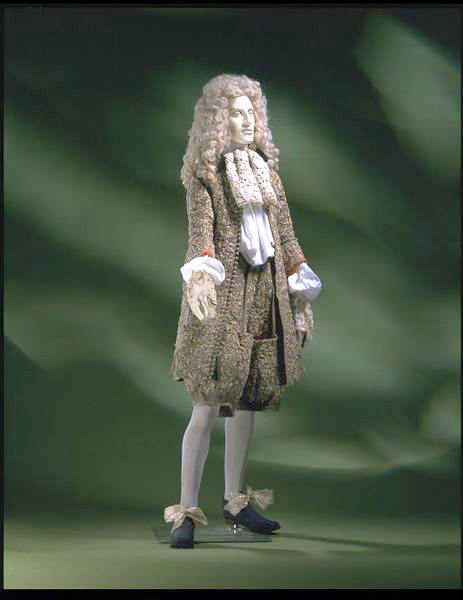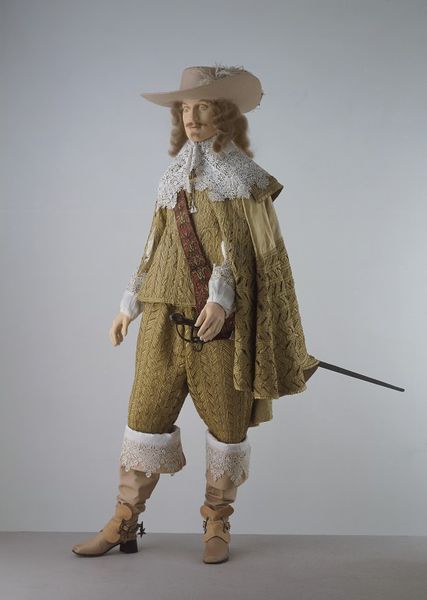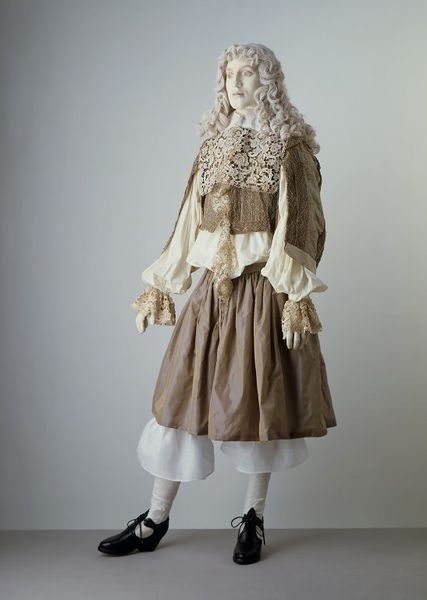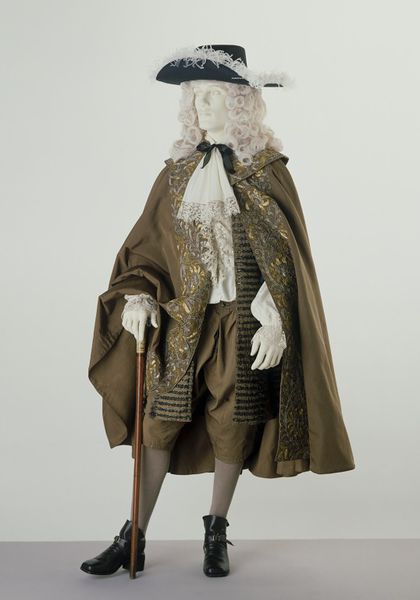“This ensemble demonstrates fashionable formal dress for men in the late 1630s and early 1640s. The breeches are long and fairly full in cut, reaching just below the knee. The doublet has a high waist at the sides and back, extending to a point in front. A deliberate opening of the seam on each sleeve allows the fine linen shirt underneath to be seen. No ensemble was complete without a cape, and this example spans almost a full circle. The ornamental technique used on this outfit is unique and complicated. Long narrow strips of satin were braided and ‘pinked’ (holed). Then they were cut into short pieces and arranged vertically and diagonally over the underlying shape of each garment to create a rich and decorative effect. The collar of the cape has been altered at a later date.”- Victoria & Albert Museum
“By the 1660s the traditional doublet and hose had altered from their forms earlier in the century. The doublet had become a very short garment that exposed the shirt underneath at the waist. This particular example is made of beige watered silk and decorated with parchment lace. The fronts and sleeves are paned, that is, fashioned in narrow strips that open to reveal the shirt. This doublet is part of an ensemble of matching cassock and breeches, reputed to have belonged to Prince Rupert (1619-1682). The breeches were too fragile to exhibit, and so a reproduction pair is shown here, carefully reproducing the exact style of the originals. Known as petticoat breeches, they were a very wide, full shape and open at the knee.” – Victoria & Albert Museum
“In Britain in the 1660s a new style of formal daywear was introduced for men, replacing the doublet and petticoat breeches. The new fashion was started by King Charles II, under the influence of King Louis XIV of France. Men now wore a long, fairly tight-fitting coat reaching to the knee. The breeches accompanying the new coat were much more closely fitting than previous breeches. Men’s dress continued to be elaborately decorated. This coat has silver braid applied horizontally down both fronts, with cuff facings of blue wool. The ensemble is shown with an equally lavishly embroidered cape. By the 18th century the cape had become a purely functional garment, used only for protective wear outdoors.” – Victoria & Albert Museum

1673, Victoria & Albert Museum
“These are two items of an ensemble that James, Duke of York, wore to his wedding in 1673. It represents a new fashion in men’s wear that had been introduced several years before by the Duke’s older brother, Charles II. The style came from France where it derived from the justaucorps, a version of military coat made fashionable by Louis XIV.” – Victoria & Albert Museum


